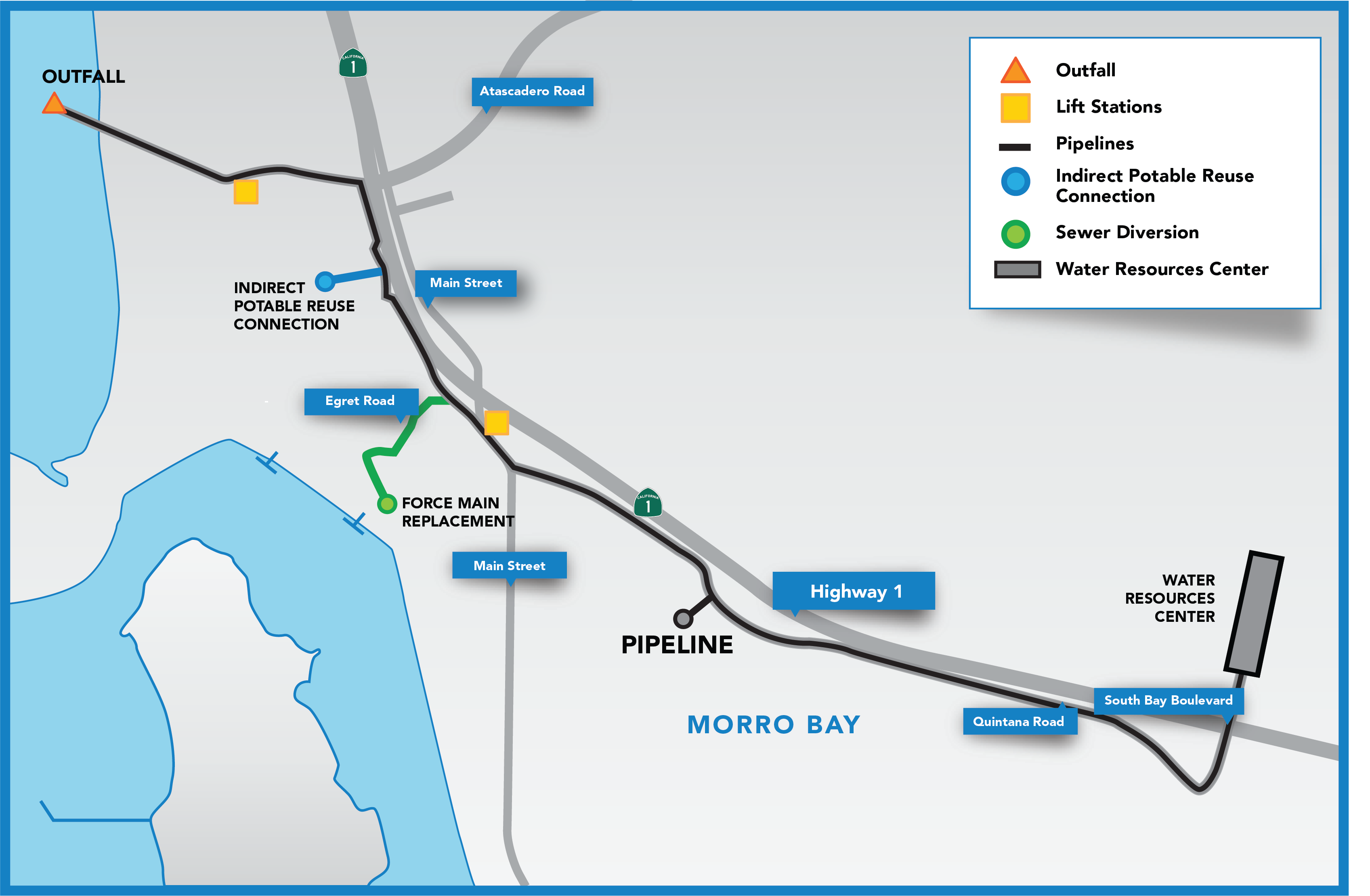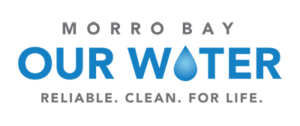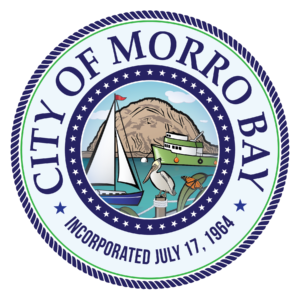The City of Morro Bay is developing a local drinking water supply, which will be capable of reducing the City’s reliance on imported water from the State Water Project. The City’s Our Water Program includes the recently constructed Water Resources Center and pipelines and will include the infrastructure to use purified water for groundwater recharge to replenish the Lower Morro groundwater basin. This groundwater recharge infrastructure will create a new, reliable, and drought resistant water supply for the City. The new facility uses a proven, multi-step advanced purification process for water to be safely recharged into the groundwater aquifer until it is ready for extraction and drinking water use.
About the Project
The program will…
The program includes the new one million gallon per day advanced treatment facility on South Bay Boulevard north of Highway 1, two new lift stations, approximately 3.5 miles of pipelines and wells to inject the purified water into the groundwater aquifer, which can be extracted for reuse through the City’s existing infrastructure. The facility and pipelines were constructed from 2020 to 2023, and the injection wells will be constructed in 2026.
Program Goals
All aspects shall be completed ensuring economic value with a special emphasis on minimizing rate payer and City expense.
Progress, including general project status, milestones, and budget/cost information shall be communicated to our community members regularly.
Tertiary, disinfected wastewater shall be produced in accordance with Title 22 requirements for unrestricted urban irrigation.
- Design to produce reclaimed wastewater to augment the City’s water supply, by either direct or indirect means, as described in the Basis of Design Report from 2019, and to maximize funding opportunities.
- Include features in the WRF project that maximize the City’s opportunities to secure funding and maximize efficiencies.
- Design to minimize the impacts from contaminants of emerging concern in the future.
- Ensure compatibility with neighboring land uses.
The former Wastewater Treatment Plant was not the Solution
The former wastewater treatment plant, located at 160 Atascadero Road in Morro Bay, was originally constructed in 1953 and upgraded in 1964, 1982, and 1984. It was designed to treat an average dry weather flow of 2.06 million gallons per day through a primary process (solids removal), and the secondary (biological) treatment system that could treat up to a nominal capacity of 1.0 million gallons per day.

The former wastewater treatment plant was jointly owned between the City of Morro Bay and Cayucos Sanitary District and served a combined population of approximately 14,000 people. The plant was operated under a National Pollution Discharge Permit, and the Waste Discharge Requirements were updated and adopted by the Regional Water Quality Control Board in 2017. The plant operated under a modified discharge permit from full secondary treatment requirements since its last upgrade in 1984, to allow for partially treated wastewater to be discharged during wet weather periods when the plant cannot fully treat incoming wastewater flows. However, the updated Waste Discharge Requirements, which became effective in March 2018, no longer included this waiver.
In June 2018, the City received a Time Schedule Order from the Regional Water Quality Control Board which required full permit compliance by Feb. 28, 2023. If this deadline or other intermediate deadlines stipulated in the Compliance Schedule were not met, the City would face both mandatory and discretionary fines from the Regional Water Quality Control Board. The City met the criteria required to comply with the Time Schedule Order.
In addition to the Time Schedule Order, the California Coastal Commission (CCC) denied a Coastal Development Permit (CDP) to upgrade the former wastewater treatment plant at its current location in 2013. The CCC required the City to construct a new wastewater treatment facility in an inland location away from the coastal zone to avoid coastal hazards including sea-level rise, tsunami and flood inundation.



